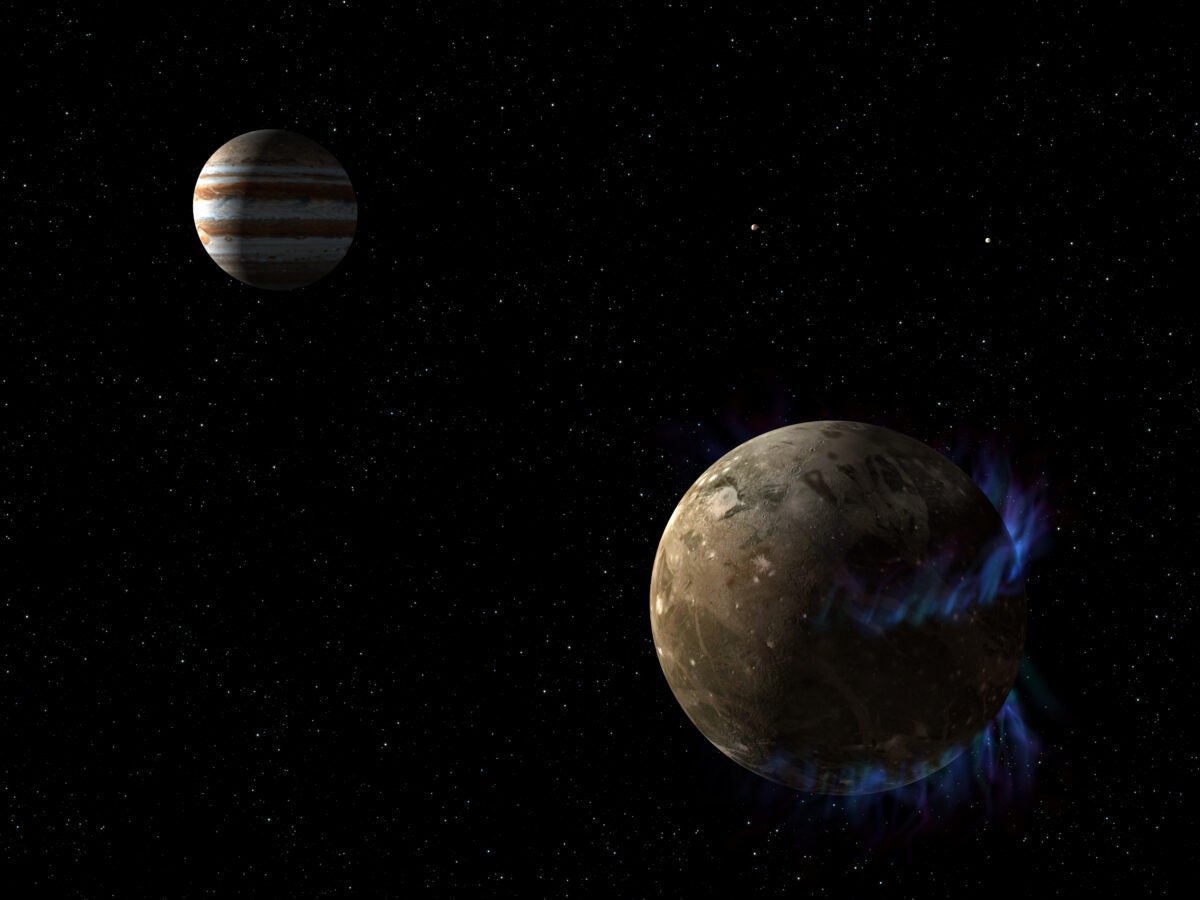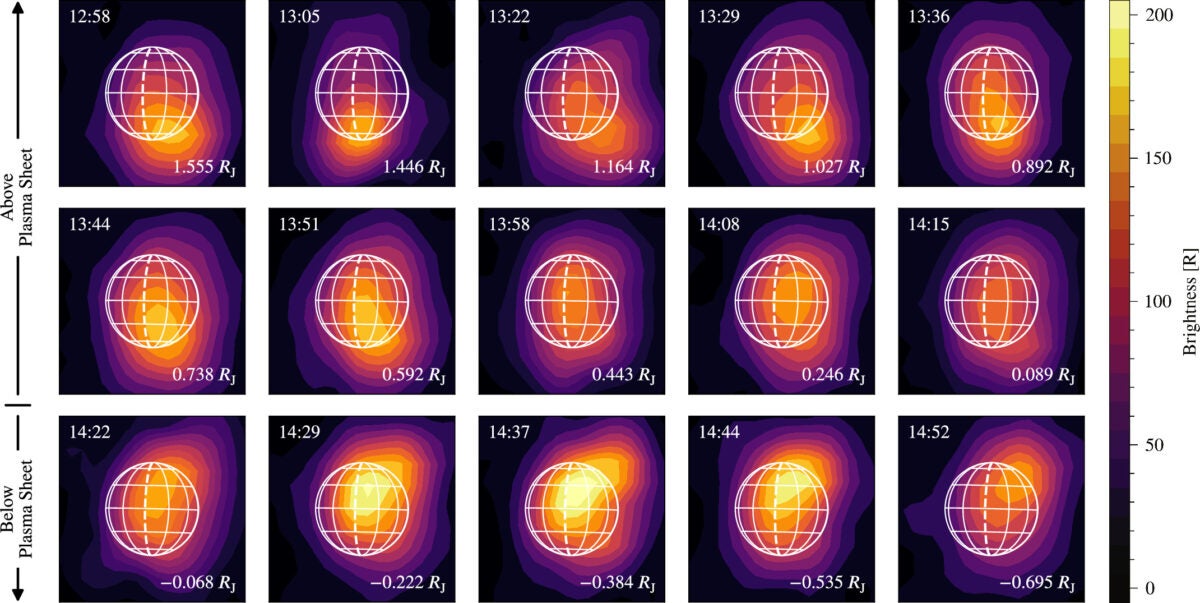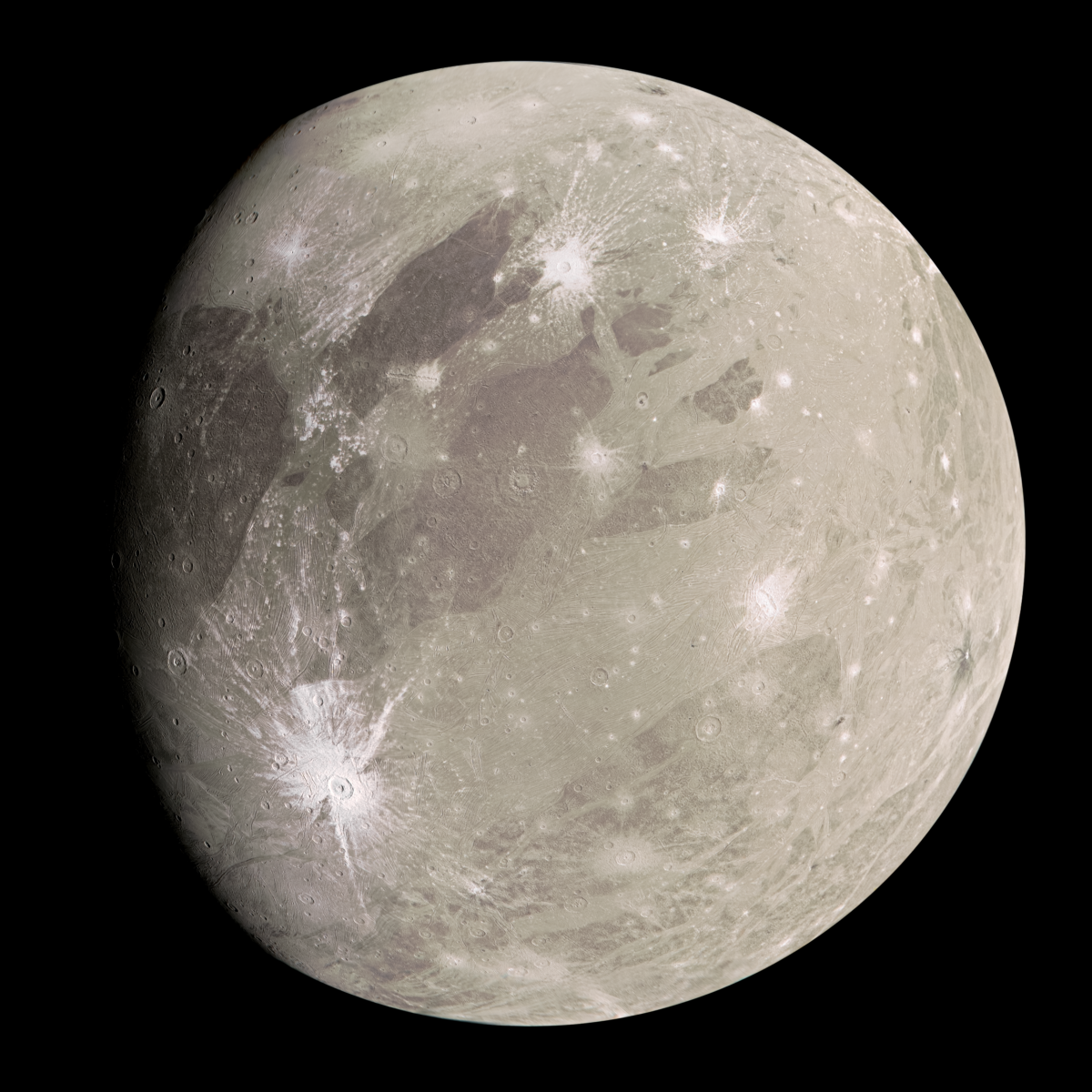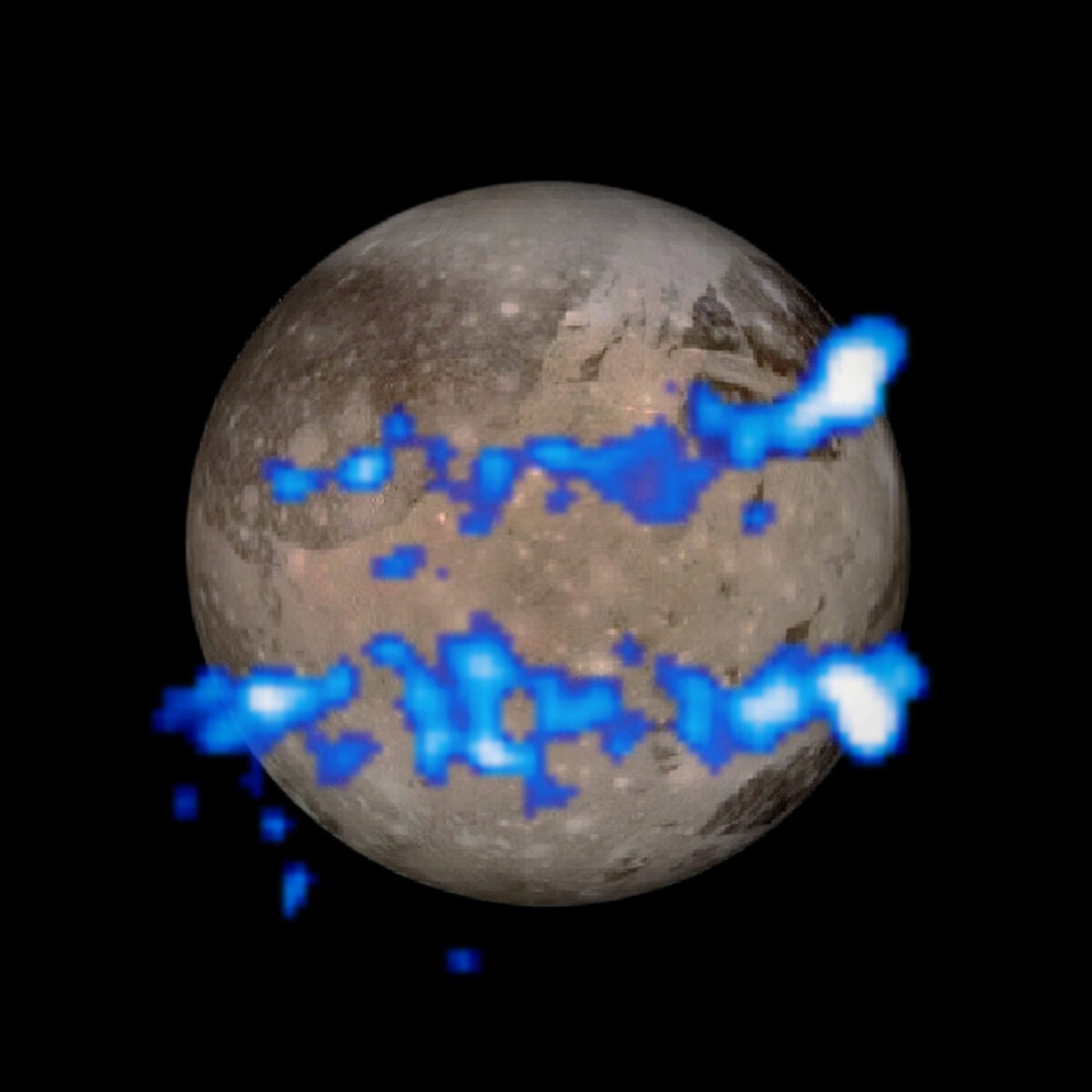
On June 8, 2021, researchers used the Keck I telescope on the summit on Hawaii’s Mauna Kea to observe Jupiter’s moon Ganymede in the shadow of the gas giant. During the three-hour eclipse, they were able to capture images of visible aurorae in the moon’s atmosphere using five-minute exposures, showing how they move and swell.
Now the team has analyzed the data to look for changing conditions in Ganymede’s atmosphere, including whether water vapor was present. This question is especially intriguing because researchers recently detected aurorae in ultraviolet wavelengths from a localized water atmosphere — the first evidence that not only is oxygen present in Ganymede’s atmosphere, but also likely water molecules.
The new results were published last month in The Planetary Science Journal.
Lighting up the atmosphere
Ganymede’s aurorae happen when electrons in Jupiter’s magnetosphere accelerate along magnetic field lines and collide with molecules in the moon’s tenuous atmosphere. The energetic impacts break the bonds, and the resulting particles emit light as they return to their original energy levels.
Based on the data the team collected, the emissions mostly were detected as red and green light from oxygen atoms.
“The aurora we saw are the same kinds of bright aurora we see on Earth,” says lead author Zachariah Milby, who is a PhD candidate in planetary science at the California Institute of Technology.
The researchers also measured the emissions every several minutes to look for changes, marking the first time Ganymede’s aurorae have been studied in such detail.

One of the main results was that the oxygen emission was almost twice as bright on the moon’s trailing hemisphere compared to the leading side. The team used a computer model to check whether the difference could be attributed to more abundant oxygen existing on the dusky side, but the results showed that such an asymmetry couldn’t explain the difference in emissions.
“There are likely more complex mechanisms taking place, involving electron flux that may be preferentially exciting molecules on the dusk more than the dawn side,” says Milby.
The researchers were also able to see the brightest aurorae transition from the northern to southern hemispheres.
“Imagine Earth’s northern lights and aurora australis switching on and off every five hours,” says coauthor Carl Schmidt, who is a planetary scientist at Boston University.
A watery atmosphere?
Scientists first detected Ganymede’s aurorae from oxygen emissions approximately 20 years ago. The oxygen molecules are sourced from the moon’s water-ice surface and are released when ions from Jupiter’s moon Io bombard the ice. Some molecules are also be released by sublimation of the ice and by electron impacts.
Only in 2021 did scientists first detect auroral emissions created from water molecules. The results demonstrated that a dominant watery atmosphere was present around the center of a side of the moon where the Sun was almost directly overhead.

But why the new results didn’t hint at any significant amounts of localized water vapor is still a mystery.
“There’s pretty strong evidence that ultraviolet emissions can come from water vapor,” says Schmidt, referring to the 2021 study.
He adds that perhaps the regions they observed in the new study weren’t warm enough to sublime enough ice for water vapor to accumulate in Ganymede’s atmosphere.
Or, alternatively, perhaps the water vapor was present at the start of the eclipse, but the lack of sunlight and colder temperatures caused it to condense onto the surface before the team’s first measurement.
Lorenz Roth, a planetary scientist at the KTH Royal Institute of Technology in Sweden, who led the 2021 study, says he wouldn’t be surprised if a water atmosphere froze in less than 10 minutes.
“The knowledge of this tenuous atmosphere is still limited, because it’s very difficult to observe,” he says.
Another possibility is that the resolution of the Keck I telescope images wasn’t high enough to detect localized regions in the atmosphere where magnetic fields may have accelerated electrons that collided with water molecules to produce such auroras, he adds.
Looking forward
Roth and a team of researchers plan to use the Hubble Space Telescope this upcoming fall to observe Ganymede in Jupiter’s shadow.
They also plan to incorporate models of the gas giant’s and the moon’s magnetospheres, which are the driving forces generating the aurorae.

“That’s what they did nicely in their paper,” says Roth.
A big advantage of using Hubble is that it can observe in ultraviolet wavelengths. Hence, they will be able to detect the aurorae before and after Ganymede is in shadow, enabling the researchers to better compare results and reconcile the differences.
“That’s going to be exciting,” says Roth.
In the meantime, “the two sides really fall by wavelength,” says Schmidt.
Editor’s note: A previous version of this article erroneously stated that images were taken every five minutes.









